Doctor Busby
“Game of Doctor Busby“- anonymous manufacturer, c.1850.
The “Game of Doctor Busby“ was invented by Anne W. Abbott and first published in America by W. & S. B. Ives of Salem, Massachusetts in the 1840s. Although anonymous, this hand coloured edition of the “Game of Doctor Busby“ is a close copy of original sets published by W. & S. B. Ives. As the rules contain the English spelling of the word ‘neighbour’ (US neighbor) it may have been published in England. See the Rules►
The set contains 20 cards divided into four sets or ‘families’ of five cards each having a small suit symbol representing a family: Busby (mortar), Gardener (spade), Doll the Dairymaid (milk pan) and Ninny-Come-Twitch (eye). It has been suggested that “Doctor Busby“ was a precursor to “Happy Families“ although the two games have many differences.
See also: “Game of Doctor Busby“ by Parker Bros, c.1890►
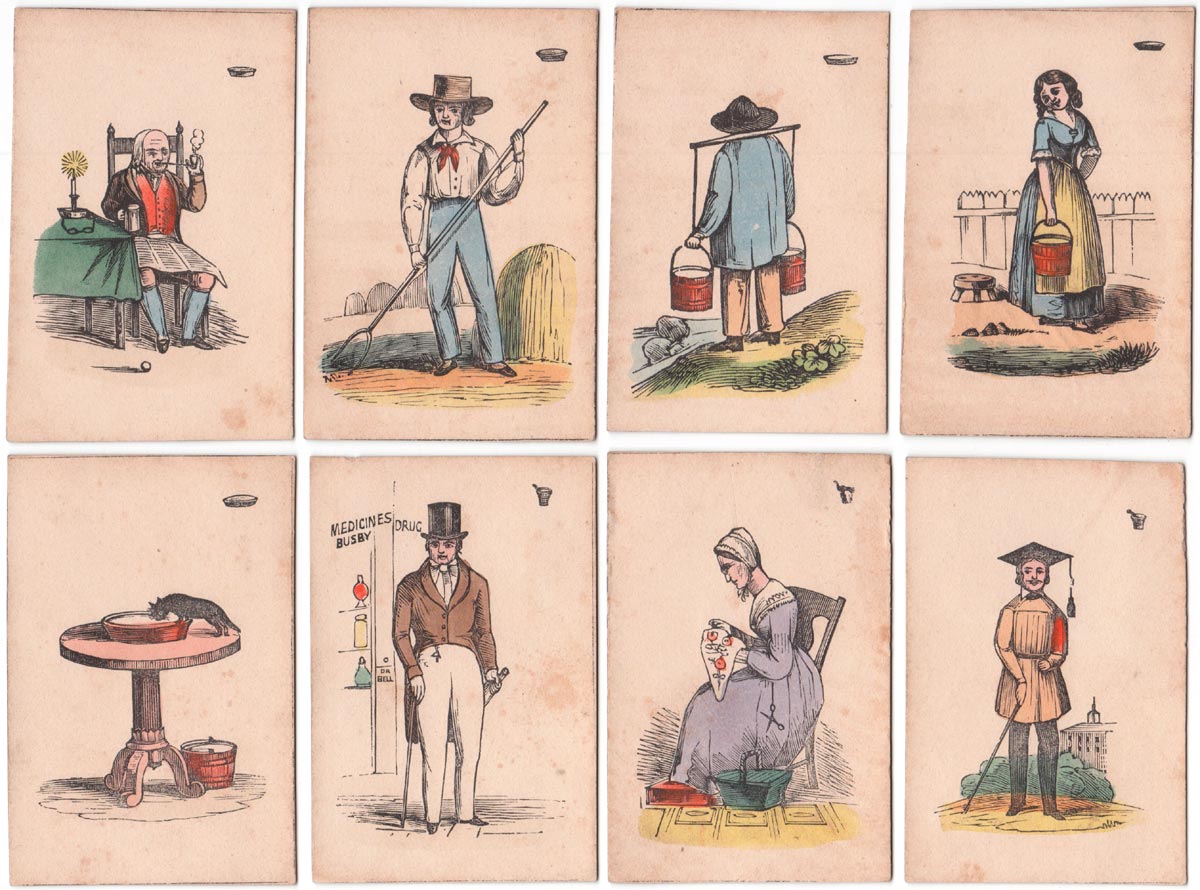
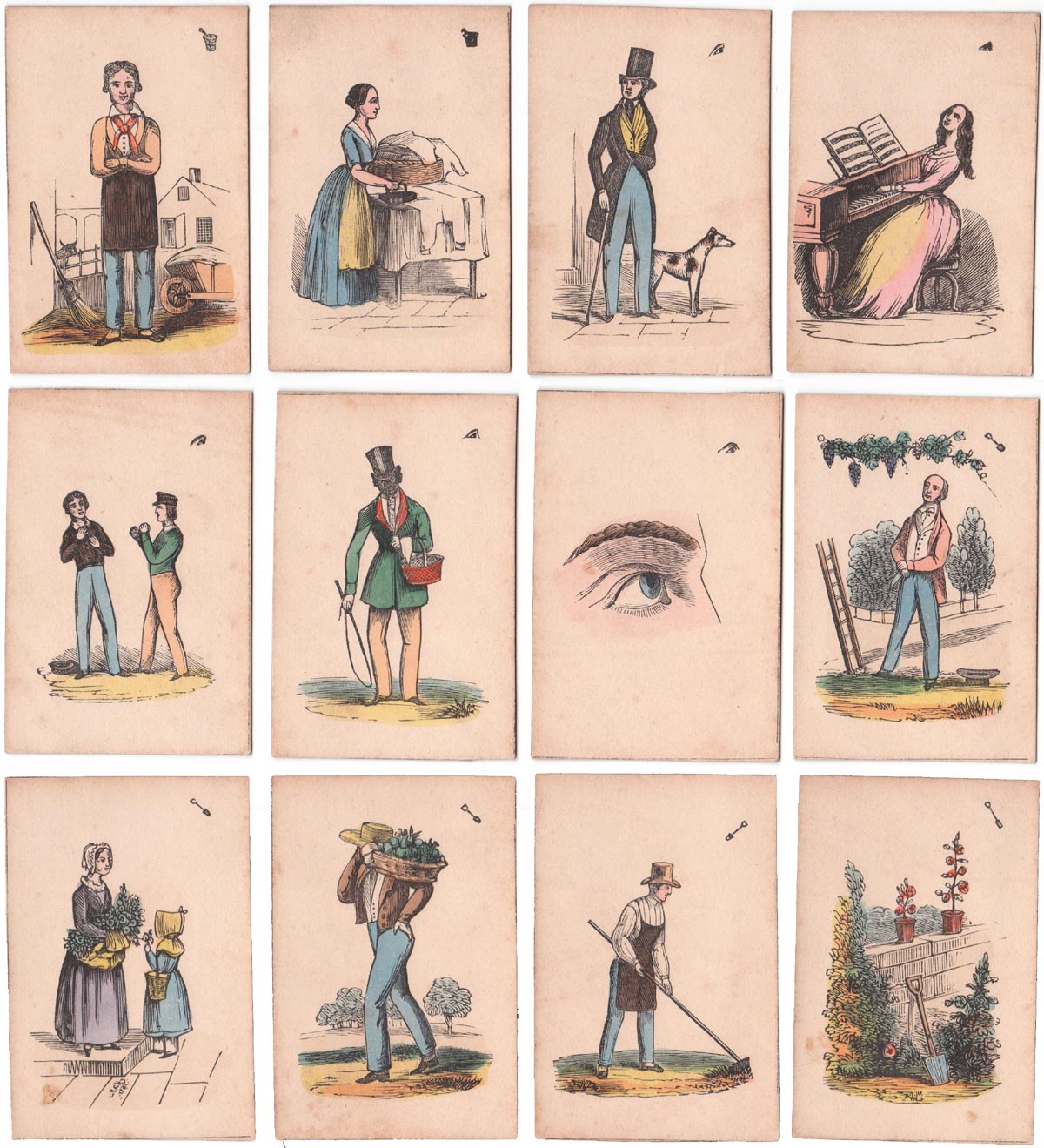
Above: “Game of Doctor Busby“- unknown manufacturer, c.1850. 20 cards + instructions in box.
By Rex Pitts (1940-2021)
United Kingdom • Member since January 30, 2009
Rex's main interest was in card games, because, he said, they were cheap and easy to get hold of in his early days of collecting. He is well known for his extensive knowledge of Pepys games and his book is on the bookshelves of many.
His other interest was non-standard playing cards. He also had collections of sheet music, music CDs, models of London buses, London Transport timetables and maps and other objects that intrigued him.
Rex had a chequered career at school. He was expelled twice, on one occasion for smoking! Despite this he trained as a radio engineer and worked for the BBC in the World Service.
Later he moved into sales and worked for a firm that made all kinds of packaging, a job he enjoyed until his retirement. He became an expert on boxes and would always investigate those that held his cards. He could always recognize a box made for Pepys, which were the same as those of Alf Cooke’s Universal Playing Card Company, who printed the card games. This interest changed into an ability to make and mend boxes, which he did with great dexterity. He loved this kind of handicraft work.
His dexterity of hand and eye soon led to his making card games of his own design. He spent hours and hours carefully cutting them out and colouring them by hand.

Leave a Reply
Your Name
Just nowRelated Articles
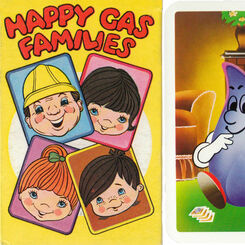
Happy Gas Families
Happy Gas Families published by British Gas, c.1985.
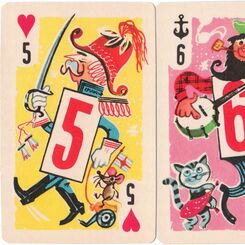
Crazy Eights
Crazy Eights by Whitman Publishing Co., 1951.
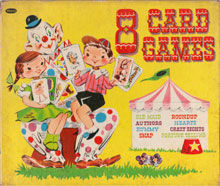
Whitman 8 Game Box
Whitman 8 Card Games boxed set, 1951.

Trades People Happy Families
Happy Families card game depicting trades people from 1920s.
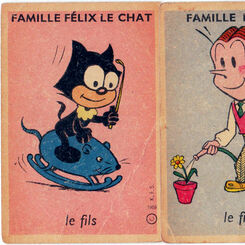
Jeu des 7 Familles
Jeu des 7 Familles © K.F.S. Opera Mundi c.1960.
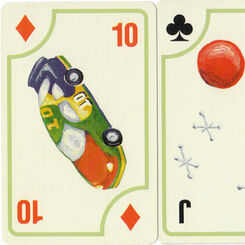
Holiday Games
IE Design Holiday Games, c.1990s.
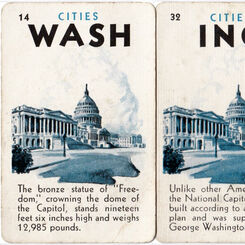
Game of Cities
Game of Cities published by E.E Fairchild Co, 1932.
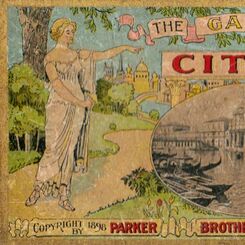
The Game of Cities
The Game of Cities, © 1898 Parker Brothers.

Spears Happy Families
Spears Happy Families.
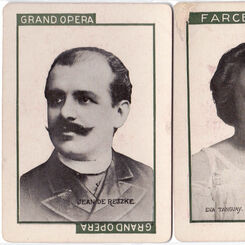
Stage
‘Stage’ card game © 1904 C. M. Clark Publishing Co. Boston, Mass. with portraits of popular actors a...
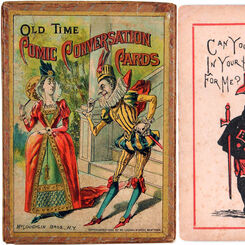
Comic Conversation
Old Time “Comic Conversation” cards published by McLoughlin Bros, N.Y., c.1887.
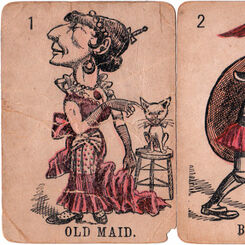
Merry Game of Old Maid
The Merry Game of Old Maid published by McLoughlin Brothers, c.1880s.

Parker Brothers
Parker Brothers, Salem, Mass., USA.
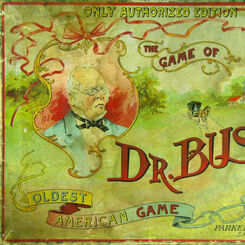
Doctor Busby
The Game of “Doctor Busby” published by Parker Brothers, Salem, Massachusetts, USA, c.1890.
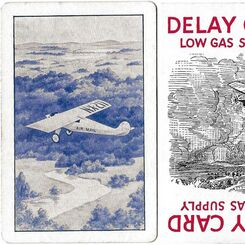
Wings
‘Wings’, the air mail game © 1928 by Parker Brothers Inc.

Space-O
“Space-O” card game published by Pla-Mor Games manufactured by ARRCO Playing Card Co, USA, 1950s,
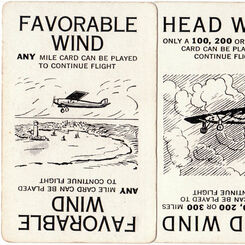
Lindy
‘Lindy’ - the flying game - a sequel to ‘Touring’ by Parker Brothers, 1927.
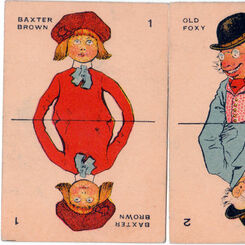
Old Maid
‘Old Maid’ card game manufactured by Milton Bradley Co., Springfield, Massachusetts, USA, c.1920s
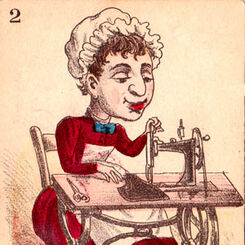
Mauclair Dacier Familles
This “Jeu de Sept Familles” was produced by Mauclair Dacier in the late 19th century.
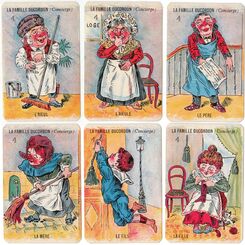
Jeu des 7 Familles by Miro Company
Jeu des 7 Familles by Miro Company, c.1960.
Most Popular
Our top articles from the past 60 days


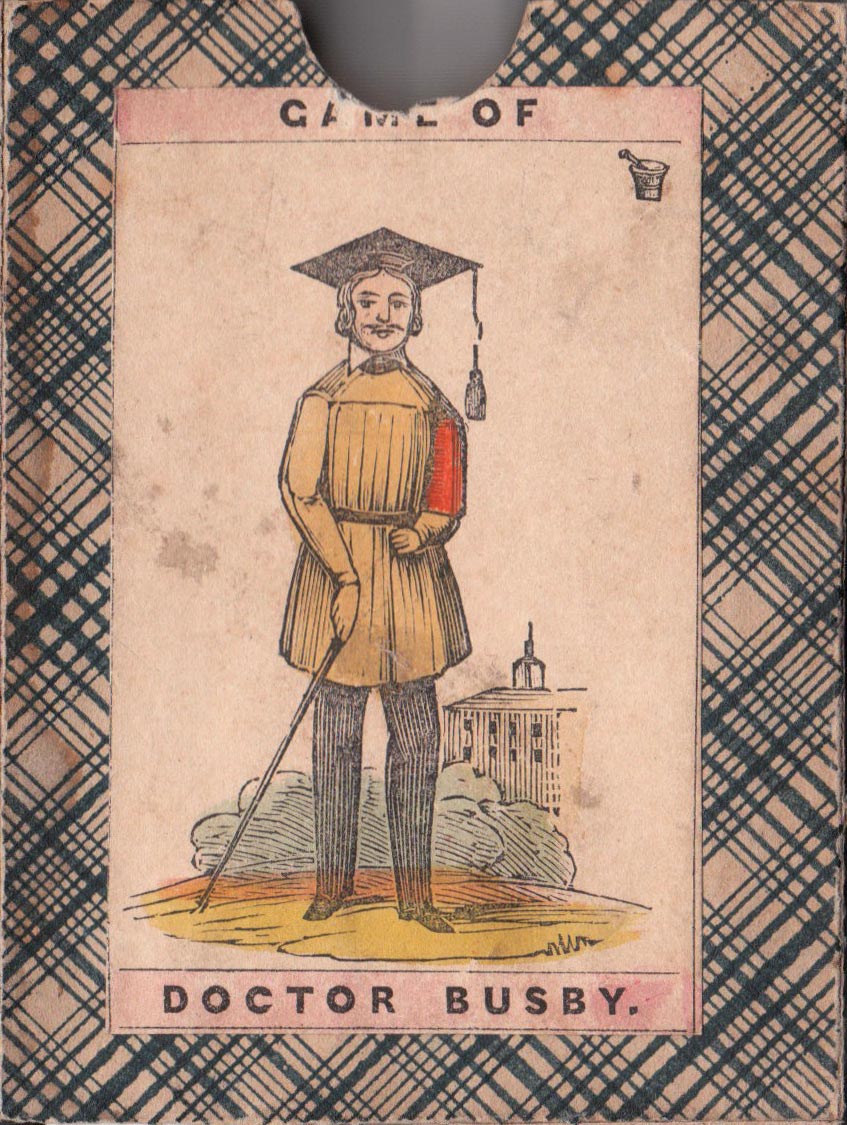
 Your comment here. Your comment here. Your comment here. Your comment here. Your comment here. Your comment here. Your comment here. Your comment here. Your comment here. Your comment here. Your comment here. Your comment here. Your comment here. Your comment here. Your comment here. Your comment here. Your comment here. Your comment here. Your comment here. Your comment here. Your comment here. Your comment here. Your comment here. Your comment here. Your comment here. Your comment here. Your comment here. Your comment here. Your comment here. Your comment here. Your comment here. Your comment here.
Your comment here. Your comment here. Your comment here. Your comment here. Your comment here. Your comment here. Your comment here. Your comment here. Your comment here. Your comment here. Your comment here. Your comment here. Your comment here. Your comment here. Your comment here. Your comment here. Your comment here. Your comment here. Your comment here. Your comment here. Your comment here. Your comment here. Your comment here. Your comment here. Your comment here. Your comment here. Your comment here. Your comment here. Your comment here. Your comment here. Your comment here. Your comment here.




















